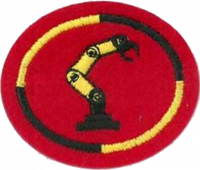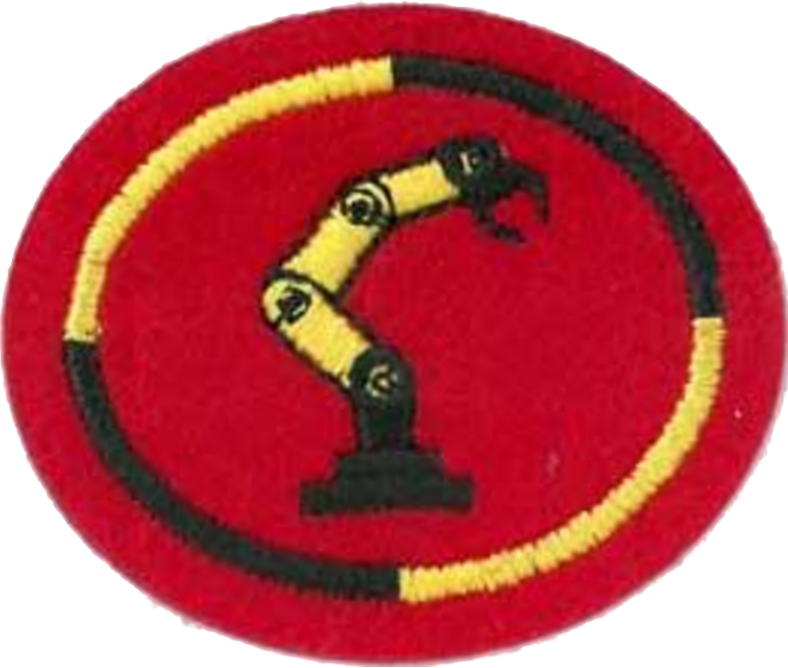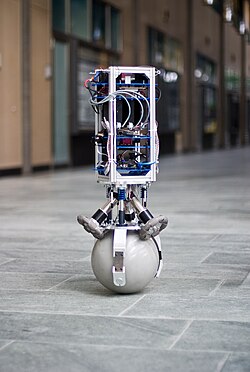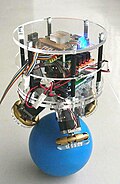Difference between revisions of "AY Honors/Robotics/Answer Key/es"
(Created page with "</noinclude> <!-- 3. Describir brevemente las siguientes herramientas: -->") |
(Created page with "</noinclude>") |
||
| Line 54: | Line 54: | ||
{{CloseReq}} <!-- 3 --> | {{CloseReq}} <!-- 3 --> | ||
{{ansreq|page={{#titleparts:{{PAGENAME}}|2|1}}|num=4}} | {{ansreq|page={{#titleparts:{{PAGENAME}}|2|1}}|num=4}} | ||
| − | <noinclude> | + | <noinclude></noinclude> |
| − | </noinclude> | + | <!-- 4. Definir la visión artificial. Dar tres ejemplos prácticos de su uso. --> |
| − | <!-- 4. | ||
| − | |||
<noinclude></noinclude> | <noinclude></noinclude> | ||
{{CloseReq}} <!-- 4 --> | {{CloseReq}} <!-- 4 --> | ||
{{ansreq|page={{#titleparts:{{PAGENAME}}|2|1}}|num=5}} | {{ansreq|page={{#titleparts:{{PAGENAME}}|2|1}}|num=5}} | ||
| − | <noinclude> | + | <noinclude></noinclude> |
| − | </noinclude> | + | <!-- 5. Describir y dar un ejemplo de cada uno de los siguientes tipos de movimiento robótico: --> |
| − | <!-- 5. | ||
| − | |||
<noinclude></noinclude> | <noinclude></noinclude> | ||
{{ansreq|page={{#titleparts:{{PAGENAME}}|2|1}}|num=5a}} <!--T:14--> | {{ansreq|page={{#titleparts:{{PAGENAME}}|2|1}}|num=5a}} <!--T:14--> | ||
| − | <noinclude> | + | <noinclude></noinclude> |
| − | </noinclude | ||
| − | |||
<noinclude></noinclude> | <noinclude></noinclude> | ||
{{CloseReq}} <!-- 5a --> | {{CloseReq}} <!-- 5a --> | ||
{{ansreq|page={{#titleparts:{{PAGENAME}}|2|1}}|num=5b}} <!--T:15--> | {{ansreq|page={{#titleparts:{{PAGENAME}}|2|1}}|num=5b}} <!--T:15--> | ||
| − | <noinclude> | + | <noinclude></noinclude> |
| − | </noinclude | ||
| − | |||
| − | + | <noinclude></noinclude> | |
| − | <noinclude | ||
| − | |||
{{CloseReq}} <!-- 5b --> | {{CloseReq}} <!-- 5b --> | ||
{{ansreq|page={{#titleparts:{{PAGENAME}}|2|1}}|num=5c}} <!--T:16--> | {{ansreq|page={{#titleparts:{{PAGENAME}}|2|1}}|num=5c}} <!--T:16--> | ||
| − | <noinclude> | + | <noinclude></noinclude> |
| − | </noinclude | ||
| − | |||
<div lang="en" dir="ltr" class="mw-content-ltr"> | <div lang="en" dir="ltr" class="mw-content-ltr"> | ||
Revision as of 23:08, 15 May 2021
Nivel de destreza
1
Año
2016
Version
20.12.2025
Autoridad de aprobación
División Norteamericana
1
1a
1b
2
3
3a
3b
3c
4
5
5a
5b
5c
5d
5e
6
Though perhaps other power sources can be used, the main sources of electrical power for robots are batteries and photovoltaic cells. These can be used separately or together (for practical applications, most solar-powered robots will need a battery backup). The important part is that the power source must be continuously reliable since most robotic applications have a significant level of automation. That means that if they stop doing the automatic job that they are programmed to do, the robot ceases to function. Thus, in most situations, there are "backup" power sources in addition to the main or primary source. Classroom robots are usually run on simple alkaline batteries or li-ion batteries. (Source)
7
A ballbot is a dynamically-stable mobile robot designed to balance on a single spherical wheel (i.e., a ball)
8
There are several ADVANTAGES to automation.
2. For tasks involved that are repetitive and boring, the machine can continue to automatically do the job without getting tired or making "bored" mistakes.
3. Automated machines are designed so that humans no longer need to lift heavy weights or do dangerous things.
4. Precision can be much enhanced with measurement accuracy tolerances at levels not possible with human hands or human intervention. (Source)
DISADVANTAGES to automation include:
1. Robots cannot think critically. Therefore if the human programmers haven't evaluated the behavior of the robot or automation in all possible emergency situations, the automated process is incapable of performing adequately.
2. Robots have replaced many workers in the workplace. Up to 40% of jobs that used to be human-operated are now run entirely by robotics and automation. Unemployment unless successful retraining or job transitions leads to societal problems (such as poverty, transitions, stress, and many more).
3. That identity theft and personal safety will be compromised if automation takes over too large a share of data and human interaction.
4. That we will become dependent on robotics and automation for basic life-tasks and economic well-being.
9
9a
9b
9c
9d
9e
10
This varies by area. In general, drones are not allowed near airports and other "government" spaces, although what that means for your region can vary DRAMATICALLY. Please check your county or region standards. Website for the FAA Standards
11
11a
This text discusses the value of human beings. We are made in God's image. Thus we are the ones with moral and ethical standards. We are the ones empowered by God to "run our world." Robots and automation are NEVER given that creative privilege.
11b
God made us in amazing ways. We are in awe of His creative power. Compared to that, robotics and automation are mere human inventions.
11c
Human beings are capable of gaining wisdom and understanding. As we work with robotics, we must use these god-given abilities! Teachers should ask "how can we be wise when we build robots?" and "what responsibilities do Christians have when making robots?" as the group reads over this passage.
11d
12
13





